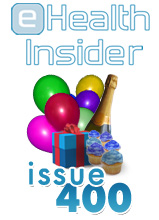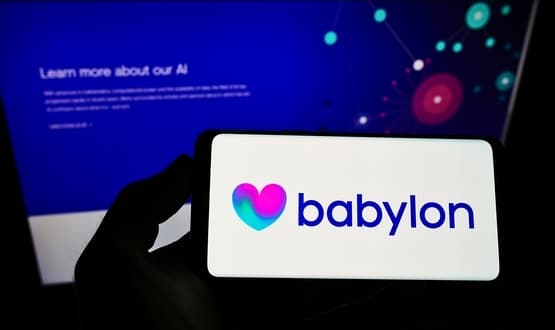400 issues and counting
- 22 October 2009
 |
Jon Hoeksma is co-founder and co-director of E-Health Insider, which launched its first newsletter in December 2001. As the 400th edition goes to press, he looks back at eight years of reporting on health IT.
This week, E-Health Insider publishes its 400th newsletter, a milestone that seemed barely conceivable when we started eight years ago.
E-Health Media Ltd, the company behind EHI, was set up in the summer of 2001, when Linda Davidson and I outsourced ourselves as the editorial team of a dotcom called Medexonline.
We were both experienced journalists and publishers and we realised there was a gap in the market for original health IT news, written for NHS readers and suppliers. Our aim was to provide news that people wanted to read; that was not afraid to report ‘insider’ stories accurately, but which also had a sense of fun.
Issue one
After providing news services for others, we decided to take the plunge and launch a dedicated health IT news title. Working on slightly creaky laptops from two back bedrooms in South West London, we unleashed E-Health Insider onto the unsuspecting world in December 2001.
We started with a small but loyal audience, which quickly grew by word of mouth. With the invaluable help of fellow dotcom survivor John Nicola, we quickly developed the first version of website and newsletter.
Familiar features, like the newsletter editorial, were there from issue one. Then, as newsletter registrations grew steadily, we began to make a name by breaking stories that even the nationals started to pick up.
A little NHS IT project
In the first issue of EHI, we reported on a visit that Microsoft head Bill Gates had made to London. He spoke alongside then-health secretary Alan Milburn, who announced an extra £83m for NHS IT in 2002-03. Although we didn’t know it at the time, it was a sign that something even bigger was brewing.
Another straw in the wind came in April 2002, with the publication of Derek Wanless’ review for the Treasury of NHS future funding needs. In a bid to make the NHS more efficient, Wanless called for a doubling of investment in NHS IT.
We later learned that in February, then-prime minister Tony Blair had chaired a No 10 summit at which an NHS IT programme was given the green light.
Over our first 400 issues, we’ve followed all aspects of NHS IT and informatics. We’ve written about networks, PACS, RFID, mobile phones and text messages, GP systems and telehealth, rows over confidentiality, patient helplines, rating sites and robots.
But the story that has dominated our coverage has been the effort to digitise the health service through the multi-billion project that became the National Programme for IT in the NHS. The huge interest in NPfIT helped to grow our audience. Suddenly, everyone wanted to know about the world’s biggest civilian IT programme.
Issue 100
By the time EHI celebrated its 100th issue in October 2003, it could announce that it had 6,000 registered readers. In the same year, we launched extremely popular forums that ran throughout the procurement phase of the programme.
While the forums helped to cement our early reputation as ‘the Private Eye of health IT’, we eventually decided we couldn’t risk the Eye’s legal bills. In their place we introduced the popular reader comment tool, giving readers the chance to comment on news and features after moderation by ourselves.
The following year saw the launch of the E-Health Insider Jobs Board and sister title E-Health Insider Primary Care, which provides in-depth coverage of primary care IT.
2004 also saw us quit our back bedrooms for offices in Wandsworth, and take on our first staff. Other new members of the team soon followed. By 2006, we’d had to move one floor to bigger offices.
The following year, 2007, saw EHI hold its first solo industry awards ceremony, with the invaluable backing of long-term sponsor BT.
For all the strengths of online news, it can be a little virtual and impersonal. The awards are a fantastic way to bring people together, learn about and celebrate innovation across the NHS, and meet the teams and individuals behind the projects.
2007 also saw the launch of EHI’s European sister title E-Health Europe, which now has a circulation of 10,000. Our growing team – by now 10-strong – led us to relocate nearer to central London. From the old Royal Doulton factory, we very nearly have a fine view across the Thames to the House of Commons.
We’ve been consistently lucky in finding great people to work for us, not least on sales and editorial. But special thanks must go to Grace Saah, our long-suffering bookkeeper and longest serving member of staff.
Going live
By 2008, EHI registrations had passed 22,000. We launched our new market research reports, beginning with the highly successful E-Health 2.0 report.
If everybody wanted to know about the national programme in our early days, it seems that they want to know more about the tech-enabled consumer revolution that could be unleashed on the health service now
In November 2008, we also ran our first industry conference and exhibition, Healthcare Interoperability, which got an extremely positive response.
Based on this success, we decided to grow the event with the aim of becoming the UK’s premiere health IT show. As a result, on 9-10 November, we will run the much larger E-Health Insider Live ’09 exhibition and conference at The ICC, Birmingham.
Here comes the future
Our future plans include more research and events, more tightly integrated with EHI. As a company, we are beginning a major redesign and a big redevelopment of our websites. We also want to make much better use of interactive social media to build a community around EHI.
At its core, though, EHI is proud to be a media company, with a great news team and strong news values. We want to keep providing the best industry news service possible, looking to find new ways to ensure in ways that readers want to keep coming back for more.
You can measure just about everything online, but we know we’re getting it right when readers tell us, as they often do, “I look forward to reading the EHI newsletter every Friday”, “It’s the only newsletter I read every week” or “I always learn about things first on EHI.”
When we started out on issue one, we thought that the subject matter was rich with potential and interesting angles; we have never been short of news since. In many ways, it feels as though the possibilities of health IT and information keep growing.
We got the bug really early on, and we still have it: e-health really does matter.




